During its existence, the Incan Empire built a highly advanced network of nearly 40,000 kilometres (24,854.85 miles) of trails to connect the distant corners of the vast empire that stretched from Quito in Ecuador down to Santiago in Chile and east to Mendoza in Argentina. Cusco was at the heart of this great empire. Almost all of the principal trails in the mountains surrounding Cusco were built or improved upon by the Incas.
However, a particularly beautiful 43km (26.71 miles) section of mountain trail to Machu Picchu connecting the important Incan archaeological sites of Runcuracay, Sayacmarca, Phuyupatamarca, Wiñay Wayna (Huinay Huayna), and Machu Picchu have become popular with hikers in the last 30 years and has become known as the "Inca Trail to Machu Picchu". It is by far the most famous trek in South America and is rated by many to be in the top 5 treks in the world. In just 43 km (26.71 miles) it manages to combine beautiful mountain scenery, lush cloud-forest, and subtropical jungle and, of course, a stunning mix of Inca paving stones ruins and tunnels. But the final destination of the trail just cannot be beaten: Machu Picchu, the mysterious "Lost City of the Incas"!

Access to this section of Inca Trail is strictly controlled and only authorized trekking companies are allowed to sell this trek. All guides on the Inca Trail must be licensed. No more than 500 people (only 200 tourists and the rest are guides, porters, cooks) per day are allowed on the Inca Trail. This tour must be booked at least 5 months in advance.
The Inca Trail can be hiked year round although the months of April till October are probably more comfortable since the weather is drier. June, July and August are in the high season when the Inca trail can become fully booked so be sure to make the Inca trail reservations in advance. The Inca Trail is closed each year during the month of February to allow conservation work to take place. The months of January and March are in the wet season so hiking the trail can be a little miserable.

There are 4 tour options in this route:
The Classic 4-day Inca Trail to Machu Picchu
Inca Trail 5 day Trek
The Short Inca Trail, typically 2 days
The Salkantay & Inca Trail Trek, typically 7 days
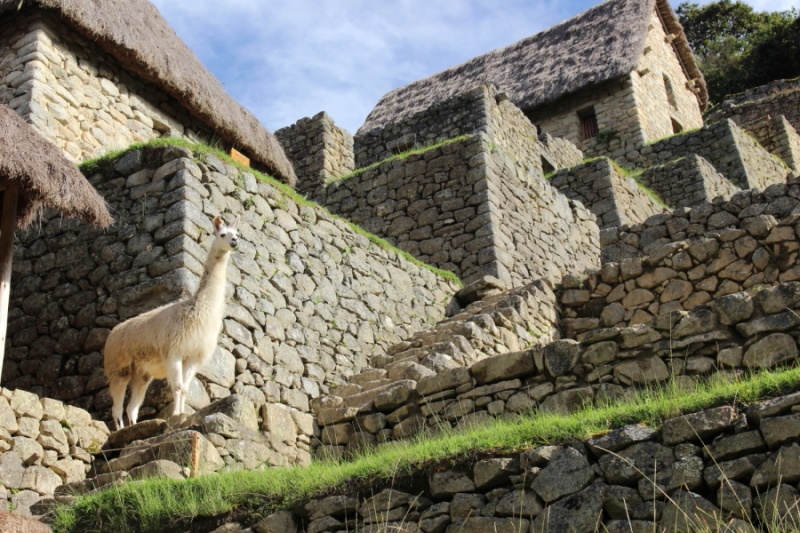
The Classic 4-day Inca Trail to Machu Picchu (difficulty level: medium)
This is the most popular route. It is often called “Km82”, because it starts 82 kilometres along the railway line between Cusco and Machu Picchu. The group usually arrives at the Inca ruins of Machu Picchu for sunrise on the fourth day. The trek is rated moderate and any reasonably fit person should be able to cover the route. It is fairly challenging nevertheless, as it has the serious altitude changes (altitudes of 4200m (13779.53 ft) are reached), and the climate varies along the length of the trail; ensuring that you are well acclimatized is important. If arriving from sea level, plan to spend at least 2 full days in Cusco prior to commencing the trek.
Inca Trail 5 day Trek (difficulty level: medium)
This itinerary is almost identical to 4 day trek. However it has number of distinguishing features, namely you have the opportunity to visit the ruins of Llactapata where you will probably camp on the first night. Besides, you will camp at different less crowded campsites during your trek. Although you will probably arrive at Machu Picchu in the afternoon of the fourth day of the trek you will usually camp down in the Urubamba valley (or possibly stay at a hotel in Aguas Calientes) before returning to Machu Picchu for sunrise on the fifth day. You'll still be walking 12-15 km (7.46 – 9.32 miles) per day, which is more difficult than it seems due to elevation changes and various climate zones. This itinerary is not as popular as the 4 day version, but the trek permit is still necessary so be sure to book well in advance.
The Short Inca Trail (typically 2 days - no camping; difficulty level: easy)
There are two main alternative treks to the traditional 4-day Classic Inca Trail. The first and most popular alternative is the Short Inca Trail which can be completed in 1 or 2 days. This trek is easier and shorter than classical route. It starts further along the Vilcanota River Valley closer to Machu Picchu at a place called kilometre 104. At the end of the first day the tourists reach the village of Aguas Calientes where they stay for the night. The next day, they take the first bus up to visit Machu Picchu.
As in other routes there is limited number of permits for this trek so you must book several months in advance.

The Salkantay & Inca Trail Trek (typically 7 days; difficulty level: difficult)
The second alternative to the Classic Inca Trail trek is a more strenuous 7 day hike via Salkantay, a beautiful snow-capped mountain. This trek is usually done in 7 days although experienced and physically fit trekkers should manage it in 6 days.
The trek starts near the town of Mollapata and the first 3 days are spent trekking around the foot of the Salkantay Mountain. On day 4 of the trek the trail joins up with the route of the Classic Inca Trail and the trekkers visit the Inca archaeological sites of Runcuracay, Sayacmarca, Phuyupatamarca, Wiñay Wayna before trekking to Machu Picchu on the final day. This really is a spectacular trek combining the best of nature, the splendour of the Andes, and Inca heritage.
However since trek permits are required as in any other Inca Trail option, this trek must be booked many months in advance.
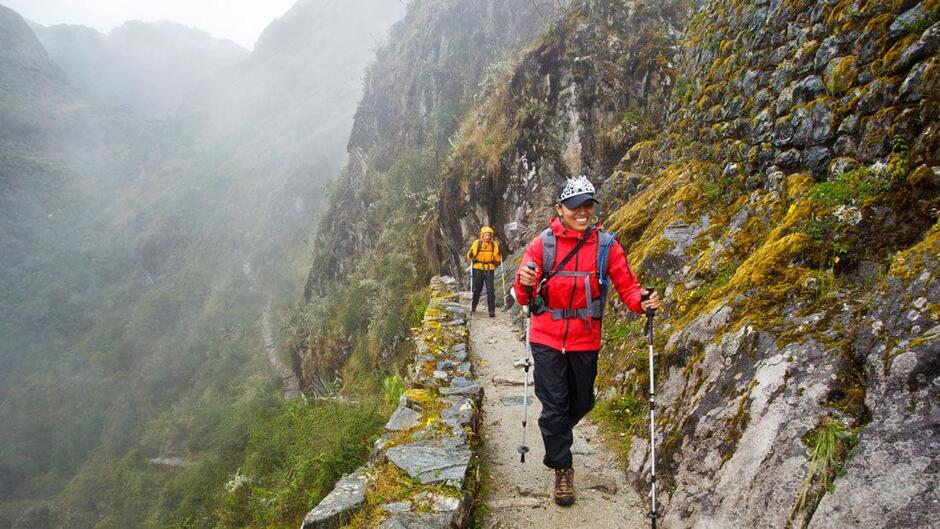
Frequently asked questions:
1. What is the daily number of tourists permitted on the Inca Trail?
The number of people permitted on the trail is limited to 500 per day. This figure includes trekkers, guides, assistant guides, cooks and porters. Of these 500 people, it is estimated that only about 220 people are actual trekkers.

2. Can I trek the Inca Trail alone without a travel operator?
If you have a small group under 8 persons you can do without the travel agencies and hire just the services of a licensed guide. The guide must be professionally qualified and will accept responsibility for the group. The guide will also purchase the Inca Trail trek permits in advance for the group. However in this case you will not be allowed to hire additional trekking staff such as cooks and porters. You will have to carry all your own equipment such as tents etc and you will have to cook for yourselves. The guide must comply with all Inca trail regulations including carrying first aid equipment and emergency oxygen.
In reality making such a contract with a guide is difficult since you can hardly find a guide who will agree to accompany your group – tour operators are not interested in hiring out their guides and the majority of the best guides have long-term contracts to work for the tour operators.
3. What is the maximum group size?
The maximum group size is 16 persons. Groups of more than 10 persons require a guide and an assistant guide.
4. What is altitude sickness and how can I avoid it?
On reaching heights above 3000m (9842.52 ft), heart pounding and shortness of breath are a normal response to the lack of oxygen in the air. However, for some visitors these symptoms can deteriorate into a conditions known as Soroche (or acute mountain sickness) when you can start to experience headaches, loss of appetite, extreme tiredness, sleeplessness and often nausea. Symptoms usually develop within the first day or two at altitude. To prevent Soroche, try to take things easy as soon as you arrive. Don't plan any strenuous treks like the Inca Trail until you have acclimatized for a few days. Avoid alcohol, cigarettes and heavy food. Drinking 'mate de coca' (an infusion of coca leaves) may help. It can be bought in any shop or ordered in a cafe. If symptoms become more severe and prolonged it is best to quickly seek medical attention and make arrangements to descend to a lower altitude. On recovery one can re-ascend slowly or in stages.
Many visitors use tablets to speed the acclimatization process and counter the symptoms of Soroche (Soroche-pills). One of these pills is Diamox.
Cusco is located 3400m (11154.86 ft) above sea level so it is important that you plan your trip so that you can spend at least 2 days in Cusco prior to starting the trekking or long tours. This period will allow you to acclimatize.
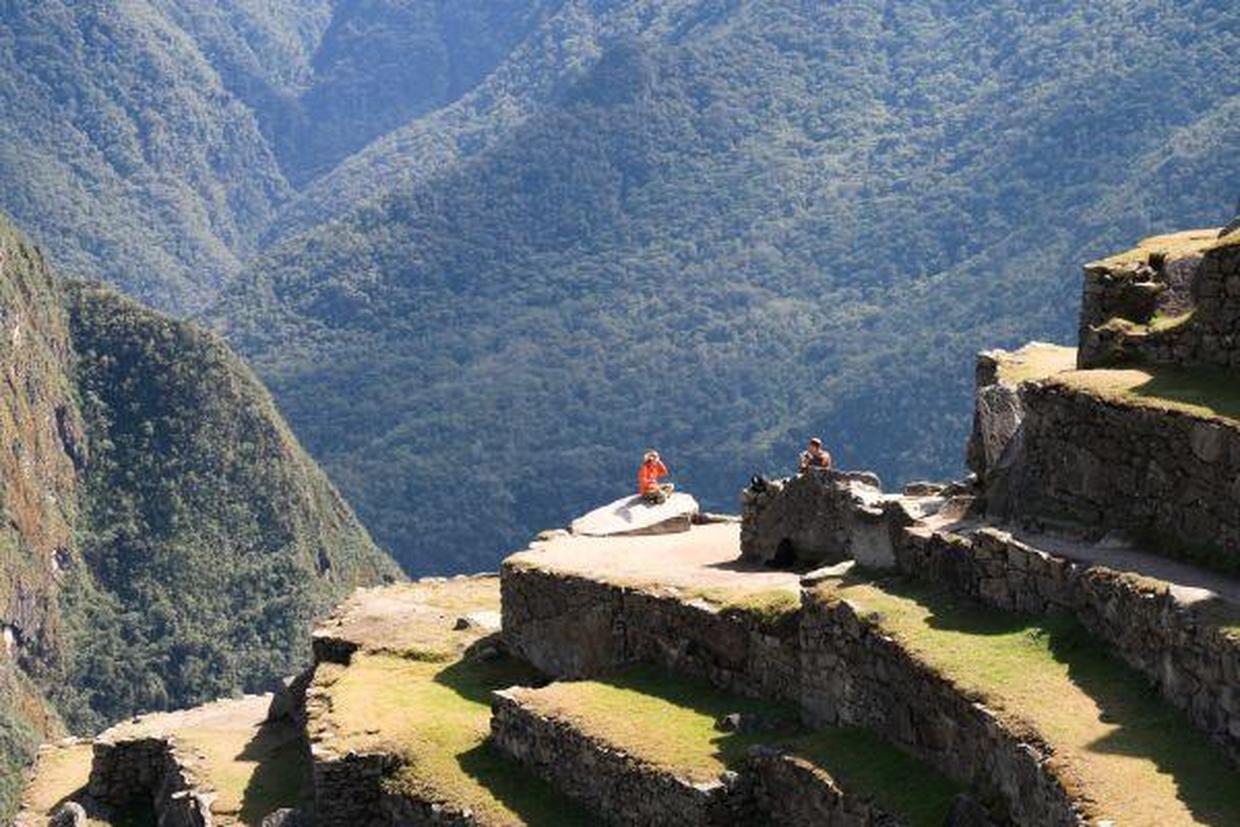
What to bring?
The key to packing for a trip to Peru is to pack for a variety of conditions while keeping the weight to a minimum. You will have to deal with the humid tropical heat of the equatorial sun and the cold mountain nights spent camping on the Inca Trail. The best way to deal with these extremes is to dress using several layers rather than one thick jumper. If you forget something, don't despair since most things can be bought in most cities you will be visiting (including warm alpaca jumpers).
Suggested Inca Trail packing list:
1. Backpack (65 litres should be quite sufficient).
2. Comfortable walking boots with good ankle support.
3. Sleeping bag (can be rented in Cusco)
4. Clothes:
2 pairs long trousers (lightweight)
2 T-shirts
1 short-sleeved shirt
1 long-sleeved shirt
1 pair of shorts
Underwear and socks (thermal underwear is highly recommended, being light, warm and makes good nightwear on cold nights).
5. Fleece jacket
6. Rain jacket or poncho
7. Hat or baseball cap to protect from the sun.
8. Toiletries: soap, toothbrush, toothpaste & toilet paper etc.
9. Sun cream, lip salve, sun glasses.
10. Flashlight
11. Basic first aid kit.
12. Insect repellent.
13. Passport and money for emergency expenses
14. Camera and spare batteries
15. Water bottle (mineral water can be bought throughout Peru)
16. Water purification tablets (The tablets can be bought in Cusco).
You can take binoculars as an optional extra.
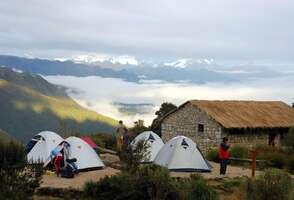
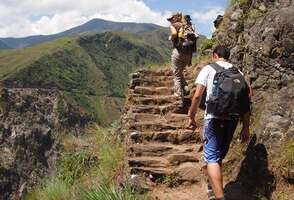
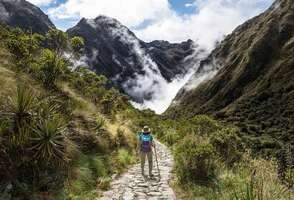
Organized tours with professional guides. Group or private services. All categories of hotels.
Short group excurstions with English-speaking guides for independant travelers.
We look forward to working together to turn your dream trip into lifetime memories!